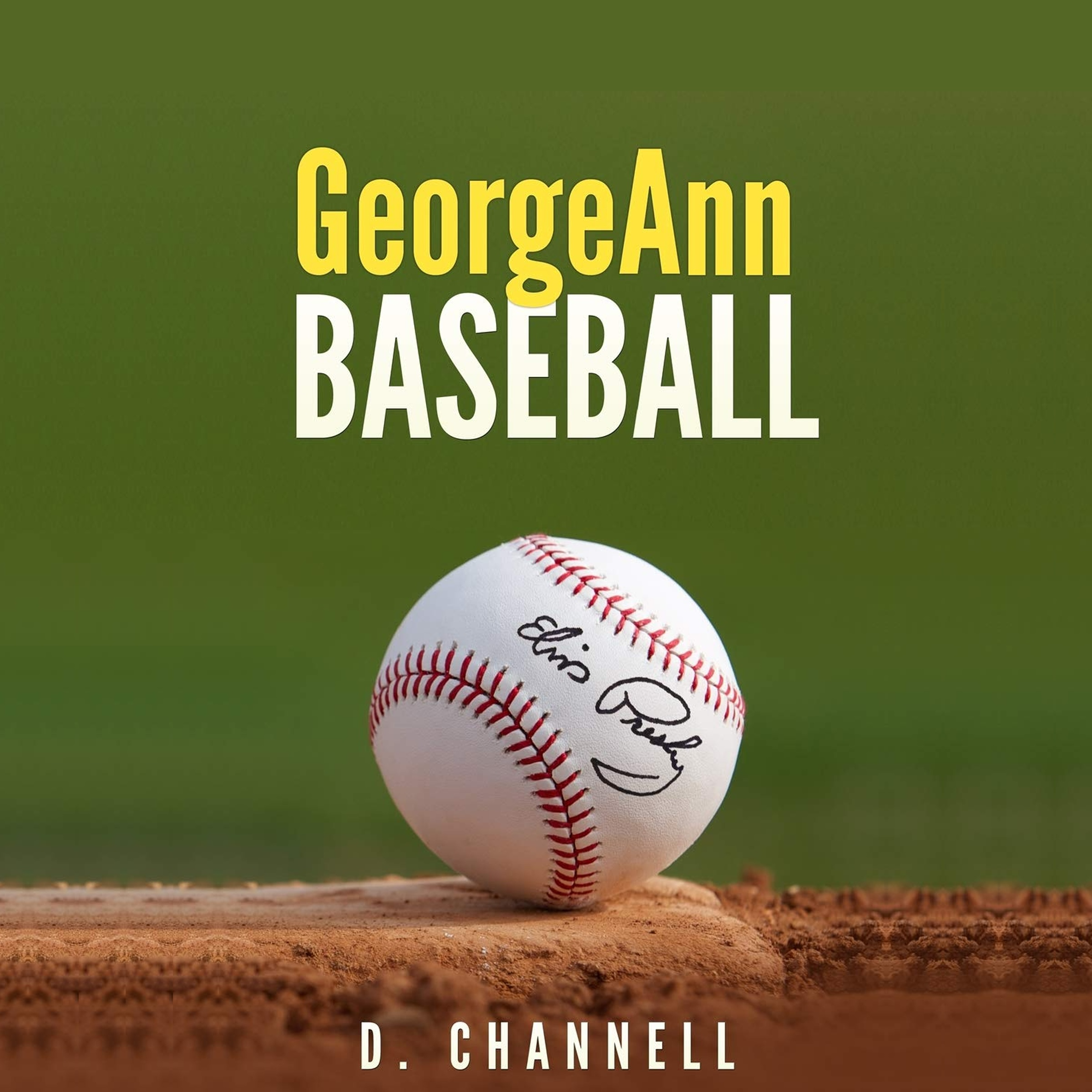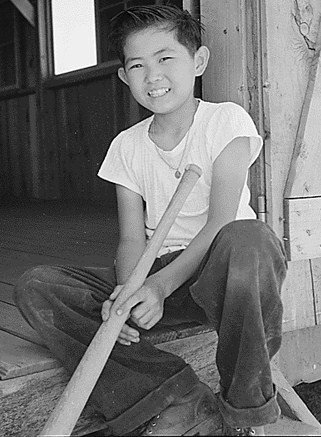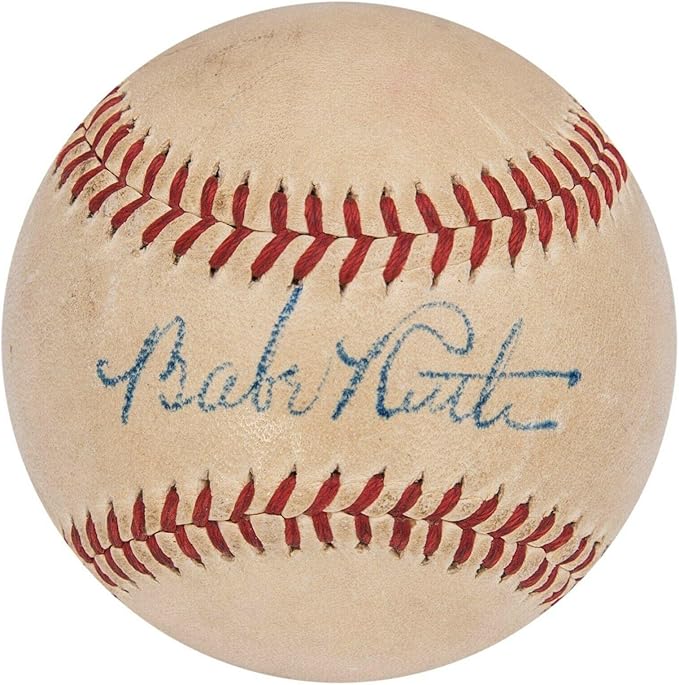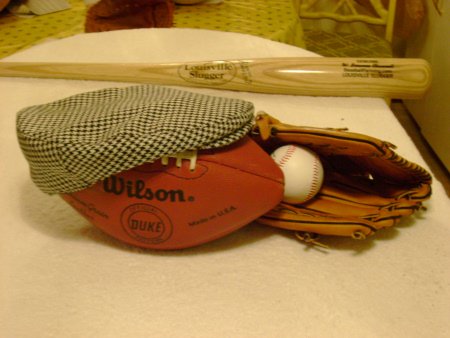Little-League-Baseball
....The Crowning Pride Of Every Town!
Could You Coach Little League Baseball
by Little League Rules?
Little-League-Baseball and corresponding league rules began when Leagues were sanctioned to be organized in 1939 for the youth of America to have their own game of baseball and its game rules.
GeorgeAnn Baseball perfectly embodies the spirit of baseballfarming. Three best friends, intertwined in a baseball game on a cloudy Texas afternoon learn some of life's most important lessons. The book recreates an epic struggle between two iconic baseball teams that first occurred on May 26, 1959.
The use of rules governing the play certainly has no shortage of league rules and regulations especially when dealing with pitching.
Let me forewarn you coaching little-league-baseball by the little league rules dealing with the pitchers is multiple and you need a calculator in your hip pocket to keep track of all the does and don't pertaining to what is allowed.
Coaching Little-League-Baseball and teaching of the baseball game rules and the official little league rules is binding upon the coaching and is dedicated in large part toward the safety and safe guarding of the pitching arm of the little league players.
The attempt to cover the complete section, chapters and volumes which would adequately covers the little-league-baseball coaching and pitching rules would be presuming much on my part to even attempt such. I would strongly encourage the sponsoring organization and the little-league-baseball team coaching staffs to study in detail the little league rules.
You may go directly to the Official source for most of your questions and answers about Little-League-Baseball Little League International.
Interesting enough on my last visit to Little League Online or the Little League International site I learned that now the general public is allowed to purchase the Official Little League Rules Book.
The most serious aspect of all for the coaching little-league-baseball and official little-league-baseball rules is the coaching of the baseball rules which pertains to little league baseball pitching.
Allow me to simply allude to the regulations concerning baseball injuries to pitchers arms and pitching dilemma. Sports medicine researchers and managers all around the country bombarded the rules making committee with new insights addressing the young pitchers need for arm rest.
Commencing season 2008 the pitching stints are regulated by the number of pitches vice the number of innings pitched. Again please refer to the coaching little-league-baseball regulations and the rule book plus any supplements thereto to gain the required total picture on all the pitching rules and regulations is a must.
Simply bombarding us with official playing rules is enough to really add confusion and chaos to the game and often the rules control the game instead of simply have fun playing which is the purpose of the game.
The most important thing about rules is to use ones common sense tempered with the good judgment of character building and then all other rules will fall into the rightful action.
One of the most profound and humbling rules for life and also for all of baseball and certainly is this one golden rule, "Learn how to lose." Every Dad or coaching Little-League-baseball effort should be to teach all Little-League-Baseball players to never forget that the opposing team players also have a desire to win.
"ONE MUST LEARN HOW TO HONORABLY LOSE TO EVER BE A WINNER." To instill this Life long characteristic within every team player is the teaching and the coaching Little-League-baseball team manager's most honorable accomplishment.
There is certainly no dishonor in being on the low end of the score at the end of the game. There is however, a bit of character flaw in showing disdain and contempt for the opponent team with the best score.
Kids should be taught to lose with dignity while at the same time learning by their shortfall for not having the skills to out perform their opponent.
Everyone cannot be the home run king and never in the history of baseball, has a hitter even the greatest, got a hit every time at the plate.
Failure to stop every ground ball headed your way, or not getting a clutch hit in the sixth inning with runners on base does not condemn the little-league-baseball coaches nor the players to everlasting failure.
Boys and girls must learn to take the little failures in stride as a lesson learned. Losing a game simply by the score is a very very small failure. Missing an opportunity of little-league-baseball coaching of training and to teach players, the importance of gracious demeanor in a loss, is unforgivable.
There is a little disconnect involved with Little League play.
Kids come to play and Coaches come to win so the happy balance of teaching and coaching youth baseball needs to start at the Coaching.
For all coaches here is some of the best pointers you will find on how to Coach our youth learn-youth-baseball-coaching.
Grit, determination and practice will help overcome most all the little miscues and errors of play.
Attitude, and character is more of a taught and mind set attribute than a physical execution of play and is one of the most important pieces of this winning thing we talk about time and time again.
Coaching little-league-baseball, the coach, should explain that with a little more determined grit a player can hone those playing skills to become a better team player, however, he needs to believe he is a winner.
This attitude thing is how we build winners, a disgusted defeatist rage is not the answer, but the calm resolve to do better is the things from which All-Stars and Champions are made.
This kind of resolve just as one wears his baseball cap with pride is essential and should be part of the Little League Rules.
One of the most helpful calming words a coach might ask of a young charger returning to the bench after a strike-out is simply this. "Son did you see the ball?"
Nothing further needs to be said. that youngster will think on that question and if he asks what you mean tell him straight-out "To hit the ball you need to watch it from the pitcher to your bat."
If this calm assurance type talk takes place then that young hard charging ball player will quickly learn the most fundamental rule of all of baseball hitting and little-league-baseball and his playing become as natural as the rain.
Put your eyes on that ball and the bat will soon learn to follow.
Now moving from the philosophy of teaching learning general rules to some specific rules like the designated hitter rule a unique baseball playing rule.
Often a Little-League-baseball Coach has a profound need to relay to others some of the most common differences between the official baseball rules and the rules governing the play at Little-League-baseball.
Here is a brief capsule view for differences of the rules:
You have I'm sure, heard the old phrase, "What difference will it make a hundred years from now?" I wonder if the boys playing on the square at Cooperstown back in 1839 ever heard that expression?
Coaching Little League baseball rules although pretty much remaining the same through the years are as all sports must experience some changes to improve the game.
It seems, or was reported, that Abner may have joined some of the youngsters on the town square in Cooperstown and played a game of ball while in town in 1839.
Some many years later, and even after Abner Doubleday had served valiantly and attained the rank of General during the Civil War, was he reported to having played ball on the town square there in Cooperstown.
Mr Alexander Joy Cartwright Jr. the true founding father of baseball, organizing in 1845 a team and putting together the rules and regulations on how the game of American Baseball was to be played, we now have youth baseball equipment and our Little League Baseball Rules.
Carl Stotz and his friends two brothers by the name of Bret and George BEBBLE were responsible for putting together the idea and translating that into our real life Little League Rules program enjoyed by the youth of America today.
Coaching Little League Baseball by official baseball rules for baseball is the rage of the Age. Strap on a little league batting helmet and let the game begin.
(Alick) Cartwright and the New York Knickerbockers Base Ball Club cracked a home run with his start of America's Baseball in 1845. Carl Stotz along with the Bebble brothers Bret and George hit a grand slam in 1939 with the advent of forming of Little League Baseball and some guiding Little League Rules.
These gentlemen should have their pictures and personal data on some of the baseball cards for trading and collecting.
Youngsters 12 years old and younger are allowed to be on a team by the little league baseball rule book.
The players use rubber-cleat-ed shoes and play with baseball bats with a maximum or no longer than 33 inches.
The happy age before reaching the age of twelve, and completing the age of innocence with baseball sixth graders, playing baseball was the time of life even before and after the Little League Rules.
Boys reaching the sixth grade and now playing their game of baseball soon realize there are girls shall we call them the Baseball Bobby Soxers also enjoy the baseball games.
One of the initial items adopted for use and coaching little league baseball and rules of play was the requirement that every batter must wear a protective helmet.
This new modification of rules for safety purposes is now required at every level of baseball including the Major Leagues of Baseball.
Coaching little league baseball with rules for baseball batting helmets requirement sure paved the way for baseball rules to change for safety sake.
This fundamental safety measure requiring the use of the protective or batting helmets is the most important of all the little league rules.
My starting years in baseball found me a little ahead of the Little League Rules era. Little League baseball rules in my day was known as baseball playing by baseball playground rules.
However my younger brothers got a full doze of the Little League Baseball and little league rules mania.
Bailey, Barney and Ben were caught up in this playing and knowing how to, what to and all there was to Little League Rules of play.
This new organization of baseball teams spread rapidly across the country like a free wind swept prairie fire. By the early 1950's just about every community, city and county was supporting these new Little League baseball teams.
Naturally all these youngsters were playing under supervised instruction and playing by Little League baseball rules.
My younger brothers Bailey (Little Yogi), Barney (The Coach) and Ben (youngest of the clan) were all part of this growing and expanding Little League Baseball playing in it's glorious formative years.
I suppose I would have to say "Bailey" was the one who set the pace for my younger brothers playing Little League baseball.
Bailey not only played the game but he was by most standards of that time one of the best. He ply-ed his trade as a catcher and was known throughout the community as "Little Yogi."
Little Yogi was the starting catcher on the first All-star Little League Team of Trussville,Alabama. He tells me the pitchers on Trussville Little League were real super heroes.
These All-Stars were really hot shot aces and threw fireball, smoke and dippity-do curves--Ray Soileau threw the Smoke, Chipper Stewart whizzed sidearm fastballs which struck fear into digging in opponents.
James Reese and Bobby Dunaway threw curve balls that could wrap around a pine sappling and still sound like a rifle shot popping into that ol' mitt.
I suppose you should consider my little league experience as being (part and parcel) confined to recess playground ball playing at Argo grammar school.
Then too if recess time wasn't sufficient we always had those Sunday afternoon games in Micklewright's pasture. My little-league-baseball years, recess play and cow pasture baseball was without the benefit of umpires calling balls and strikes or safe or out. I'll tell you how you knew what was a ball or strike, safe or out.
When an older boy or bigger boy made the call, it was much more profound and attention getting than an umpires call.
This was playing our games as youngsters by made up rules (our rules or made up rules) this was the playing of baseball during its finest hour.
The older boys on the field were our heroes, our mentors and our tormentors. We loved it to the core because we knew just as sure as God made little green apples we would have our chance.
Little-League-baseball coaching by rule calls for only six innings of play instead of a nine inning game. Rules are also in place to protect young players, which pitch, to be limited in the number and frequency of innings of pitching. The pitching arm/wing of a young player needs more years of development.
If you read my beginner baseball pages you will find in my training of beginning ball players I have cautioned, "The arm is not designed to throw excessively until properly developed and conditioned."
The little league coaching rules for pitching is now pretty well straight forward for being complicated, A pitcher should not be allowed to pitch more than eighty-five (85) pitches before he is replaced by a teammate to continue on the game.
Coaching little league pitching is the most serious aspect of all little-league-baseball rules.
You see after all is said and done it is a game it is not a war to vanquish the team coming up on the short end of the score.
The young Ace you just took out of the game is still healthy and strong and will be ready to go another game and another time.
The conduct of play in Little League coaching you will find is designed to allow play yet is designed to protect young players at the same time.
The prudent protection of young throwing arms is or should be a prime consideration of every Little League coaching purpose.
The only shortfall in this coaching little league baseball and organized baseball rules playing by Little Leaguers in my opinion is an age old issue of psychology, feelings, ego and character development without permanently bruising tender hearts by edict.
Being a hard nosed coach at the Little League coaching by rules and particularly as pertaining to the playing ages is an awesome task. It really takes the patience of "Job" for the handling of this vastly important coaching responsibility.
Do you happen to know the names of the gentlemen who are credited with organizing Little League baseball back there in 1939 ?
Well ! their home town was a small or mid-sized town in Pennsylvania by the name of Williamsport in Lycoming County, Pennslyvania. Williamsport, Pennsylvania is also the International Headquarters for Little League Baseball.
Carl Stotz and two brothers Bert and George Bebble It is especially fitting , at least in my mind, for baseball Little League coaching with rules and regulations too have had its beginning legacy on behalf of two brothers and a friend.
Baseball is a game which epitomizes teamwork, and Little League coaching is the glue which promotes such a closeness in spirited winning, which also promotes and allows a bonding with its winning teamwork accomplishments.
Be A Super Example Be A Little Leaguer.
Little Leaguers Are Ball players Enjoying Sports And Baseball.
Coming or going, backwards or forward, Little League coaching of Baseball is BASEBALL.
I must refer to the up to date new regulations of Little League coaching to be more current. But for starters here is the bottom line scenario played out each summer in Williamsport.
Little League World Series concludes a season of little-league-baseball with the Little League Championship Series hailed around the world as the Little League World Series each year in Williamsport, Pennsylvania.
This Championship Series commences with competing teams from multiple countries concluding in the Finals at Williamsport thereby making it World International in scope.
Four Regional teams of the United States and one team each from Europe, The Pacific Rim Countries, Latin America and Canada compete in a Little League World Series at Williamsport, Pa.
Ironically it has taken the rest of the professional level baseball playing countries around the globe until 2006 to participate in the first (inaugural) new Baseball International Series. The Baseball Classic or as more appropriate should be called the Baseball International Series will be revisited in 2009.
Coaching Little League baseball and the Little League Baseball Rules, although International Little League being played many years earlier, has shown the way for a Baseball Classic
Even though called a Baseball World Classic it was in fact and truth a Baseball International Series patterned somewhat like the Little League World Series in the inclusion of Multi National in scope. It is more of an International Baseball Series vice being a Classic Baseball game.
Is there an old poem or passage written somewhere which in essence says "And they shall be led by little children"? Somebody come on line and help me with this foregoing line.
The coaching Little League baseball playing stars of the future look to their Super Star baseball heroes and use them as their role models. This is the reason the older players always need to be of good Character and a quick read of my baseball-a-character-test is recommended.
Coaching Little League baseball had blazed another first in 1971 when the aluminum-bats were approved for Little League play. Three years later in 1974 the NCAA approved use of aluminum baseball bats for collegiate play.
This aluminum bat being introduced for play caused a stir of aluminum vs wood bats which is still and as of yet to be settled to everyones satisfaction.
Professional baseball; however, remains with the traditional style of wood-only baseball bats. Maybe in a hundred years, huh?
Today's era of Little League Baseball finds Moms, Dad and all the family as being part of the coaching Little League baseball as well a part of the team. Dad is obliged to help with field maintenance while Mom has her turn selling lemonade at the concession stand.
Big brothers and sisters also need to lend moral support to "little Bubba" when the big bad ump calls him out. Bud that is just part of the coaching Little League baseball rules.
"But sis I didn't even swing at the ball and he called me out." Uh Huh, and next time you hit that ball, Okay? "Okay I Promise."
A complete and comprehensive new genesis of baseball player cards in recognition of the Bebble brothers and Carl Stotz is in order. Baseball cards to recapture the early Little League pioneer players which participated at Williamsport Little League World Series will be right on.
"Do not Little League me, I'm a big boy." Yes you are.
That little Leaguer just about had it right for he is becoming a big boy now.
Before we ever had Little League Baseball, Pony League or Babe Ruth baseball leagues we simply had our sandlot-baseball teams.
Organized teams with nice diamonds, uniforms outfitting everyone with bats and plenty of baseballs followed on the heels of the cobbled up playing of our community baseball teams.
Make sure you check about baseball and swimming to understand the importance and complementing action of these two activities.
How To Play Baseball, American Legion Baseball and A Small Town Boy Remembers Little League are simply the preamble of understanding this writers viewpoint of youngsters playing baseball "A Small Town Boy Remembers" Trussville Little League .
Significantly the rural life and schooling forged views relating to the era of our modern day Coaching Little-League-Baseball and Rules of Baseball we had our made up rules as the forerunner of baseball playground rules well before the organized coaching of little-league-baseball-rules.
The development of baseball diamonds much safer for play, use of good baseball equipment, and more science involved in our baseball drills is all part of the growth of our Coaching Little-League-Baseball as a part time profession.
Natural pride in one's own hometown and especially when remembering the start of Coaching Little-League-baseball and fielding of teams in ones community makes it a pleasure to revisit back home.
Teaching and coaching little league baseball has space and time for some baseball coaching tricks since a little bit of tomfoolery could win a game. Coaching little-league-baseball and adhering to the safety rules, such as using of the batting helmet, playing little-league-baseball helps keep the players safe and has eliminated a slew of serious injuries. Click on the image to SHOP AUTHENTICALLY AUTOGRAPHED Baseballs at Amazon...for that special someone in your life! Babe Ruth...Mickey Mantle... Ted Williams... Click on the image to SHOP Baseball Bats, Books, Jewelry, Jerseys, and more... Batter Up----Let's Play Ball....
From Country Pastures To Friday Night Lights




